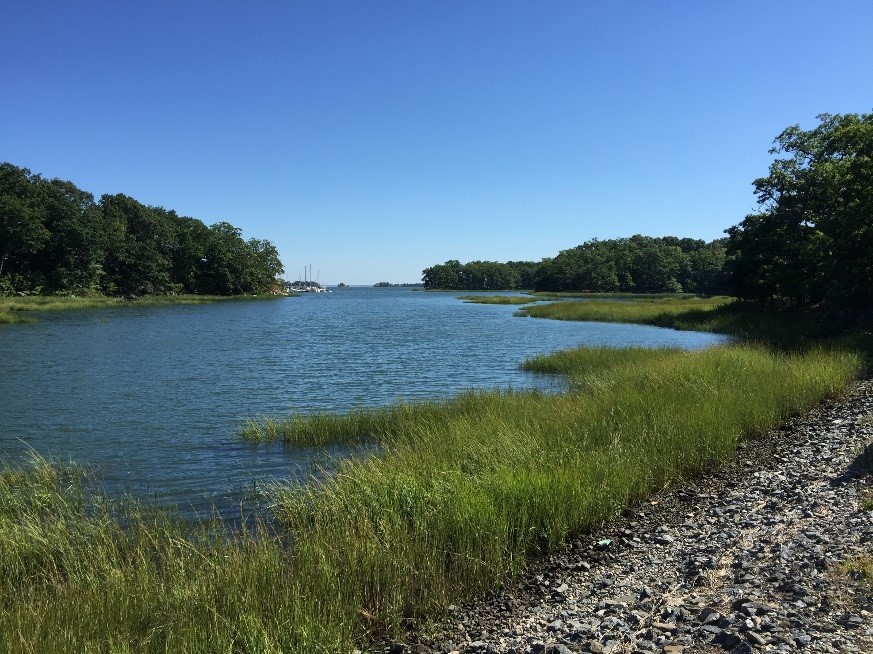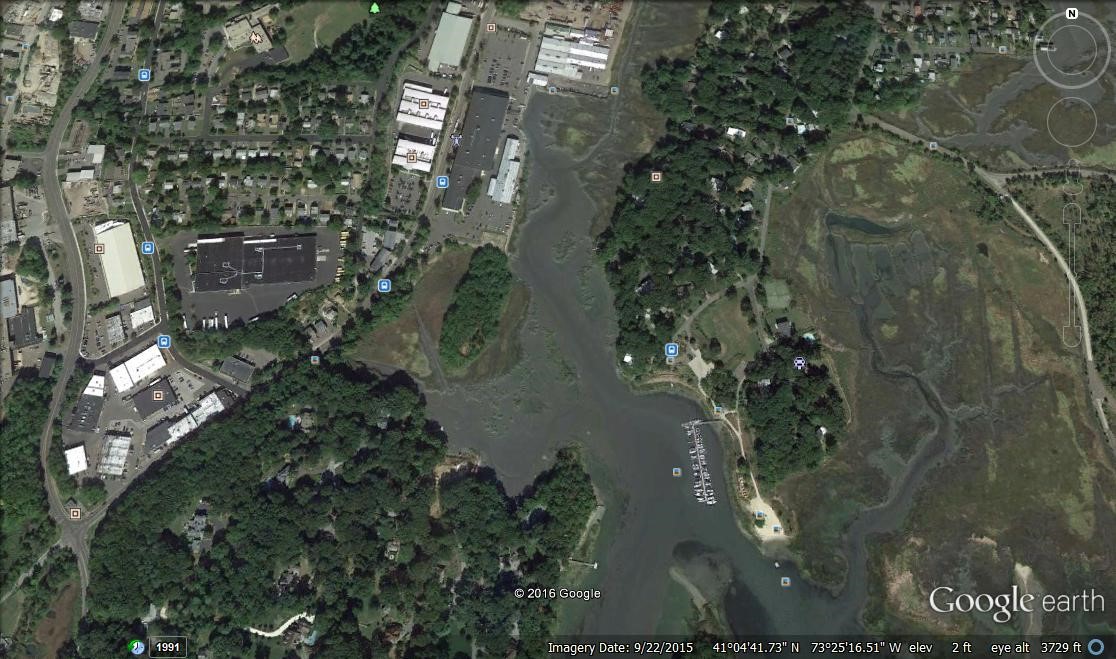Project Summary
The Norwalk Land Trust, in conjunction with the Village Creek Harbor Corporation, engaged the services of the environmental engineering firm Fuss & O’Neill to study the feasibility of restoring the saltmarsh in the Village Creek Estuary in Norwalk, CT. The broad objective was to determine the feasibility of restoring the degraded saltmarshes with dredged materials from the established Village Creek small-boat harbor situated within the estuary. The specific objectives of the study were as follows: 1) to develop a preliminary site assessment; 2) to survey topographic and bathymetric conditions; 3) to characterize soil /sediment conditions; 4) to evaluate soil settling and compaction properties; 5) to develop conceptual design options, and, 6) to establish a baseline for site monitoring.
Products
Norwalk Land Trust Final Report
Village Creek Technical Report
Village Creek Thin-Layer Deposition Study - Outreach Story Map
Village Creek September 2017 Poster
Project Description
The Village Creek saltmarsh ecosystem exhibits conditions typical of a moderately degraded saltmarsh located within a developed area. Historical photographs showed that saltmarsh covered an area of approximately 87 acres in 1934. The vegetative cover only measures 29.5 acres today. The estuary, while relatively small in scale remains unique in its composition of coastal residential property, boat basin, beach, saltmarsh, mud flats, protected wetlands, as well as industrial and commercial property. Like other areas of the Connecticut shoreline, the stakeholders reflect competing and divergent interests in the use, maintenance and management of the estuary.
The project was the first step of a phased approach to restore degraded saltmarsh in the Village Creek. The assessment work included a biological and topographical survey of the site, a comparison of the current state of saltmarsh in the estuary with historical vegetative cover, an evaluation of the physical and chemical properties of the sediment, a proposal for the design of an operational project with consideration of regulatory constraints and environmental impacts, and, the establishment of a baseline system for monitoring the development of new vegetative cover after the completion of a saltmarsh restoration program.
After these assessments and site evaluation, a conceptual restoration design was proposed for some of the northern sections of the estuary. The preliminary design will inform the development of a long-term restoration plan and allow for; 1) the targeting of the most optimal areas for restoration, 2) the volumes of sediment that will be needed for each designated area, and, 3) the optimal elevations that need to be achieved to support marsh grass growth in supplemented areas. The information generated from this work helped to determine the feasibility of saltmarsh restoration in the estuary and provide the foundation for a focused operational restoration program while increasing the likelihood of achieving a measurable improvement in the environmental health, resiliency and quality of the estuary.
Primary Funding Source
National Fish and Wildlife Foundation
Project Team Lead
Rob Everich, Norwalk Land Trust

